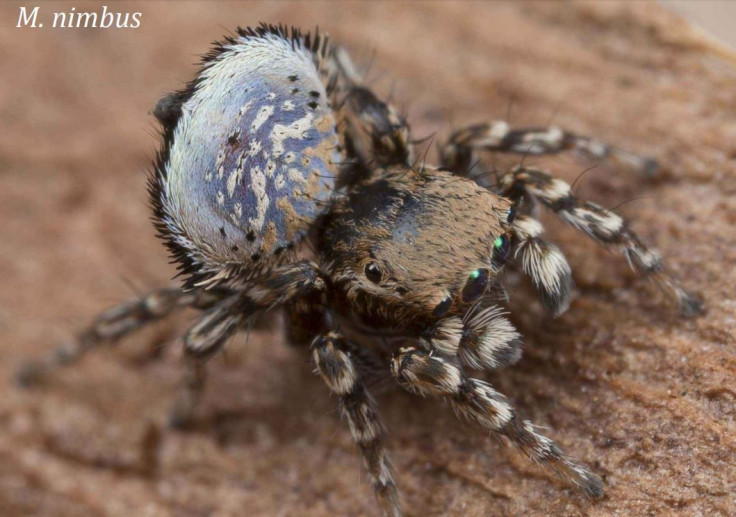Scientists Find Two New Peacock Spiders, Known For Funny Dances

Two scientists’ spidey sense was tingling when they found two new peacock spiders in Australia, adding to an arachnid family known for its mating dances.
The scientists described their two discoveries in the spider-themed scientific journal Peckhamia, including with their research numerous close-up photos of the creatures that could make arachnophobes scream in terror.
One of the species, Maratus nimbus, was named after a cloud type because there is a feature on its body part called the fan, which a male uses to attract a female, that looks “like a group of clouds across the sky at dusk,” the study explains.
It may find shelter at the base of dry plants, which is where it was found in New South Wales, on grass-like vegetation called sedges and at irises.
The other new species, M. sapphirus, was also named for a feature on its fan — a decorative element that has a “sapphire-like appearance.” But the name takes on additional meaning because this peacock spider was discovered in a part of New South Wales that is referred to as the “Sapphire Coast,” according to the study.

Peacock spiders, the genus Maratus, are part of the jumping spider family and are just a few millimeters long. They have been known for more than a century but were only recently thrust into the spotlight, when the small creatures received attention for their dancing. The showy courtship rituals have been compared to those of the peacock, the birds from where they get their name.
Another of the species known as the Coastal peacock spider or Maratus speciosus, for example, lifts its legs, like goal posts, squats like it’s doing a plie in ballet, lifts its fan and wiggles that rapidly from side to side and flaps the fan as part of its courtship dance. It has a design on its fan that looks almost like a face with wide eyes and a unibrow, complete with hair tufting out of its sides.
Public awareness of the peacock spider dances naturally led to parody videos of the spiders dancing to popular songs like the Village People’s “ YMCA.”
According to news.com.au, Australian spider-hunter Stuart Harris found the new M. sapphirus peacock spider and brought it to one of the study authors, Jürgen Otto, who called it and M. nimbus “cute.”
Peacock spiders “turn people’s opinions of spiders upside down,” Otto told news.com.au. “They’re funny little spiders with these fancy flaps and fancy moves; they’re like little birds of paradise. They’re so small yet perform and move in such interesting ways.”
The spiders are found all over Australia and the different species come in a wide variety of colors and patterns, making them relatively easy to identify.
“They’re not scary hairy black things that are dangerous. They’re beautiful, they display curiosity and fear, they hide behind leaves when they’re scared,” Otto said. “These are reactions and behaviours more like pets or mammals so I often compare them to puppies and kittens. “They’re completely harmless and they’re cute so they turn people’s opinions upside down of what a spider looks like.”
© Copyright IBTimes 2025. All rights reserved.





















